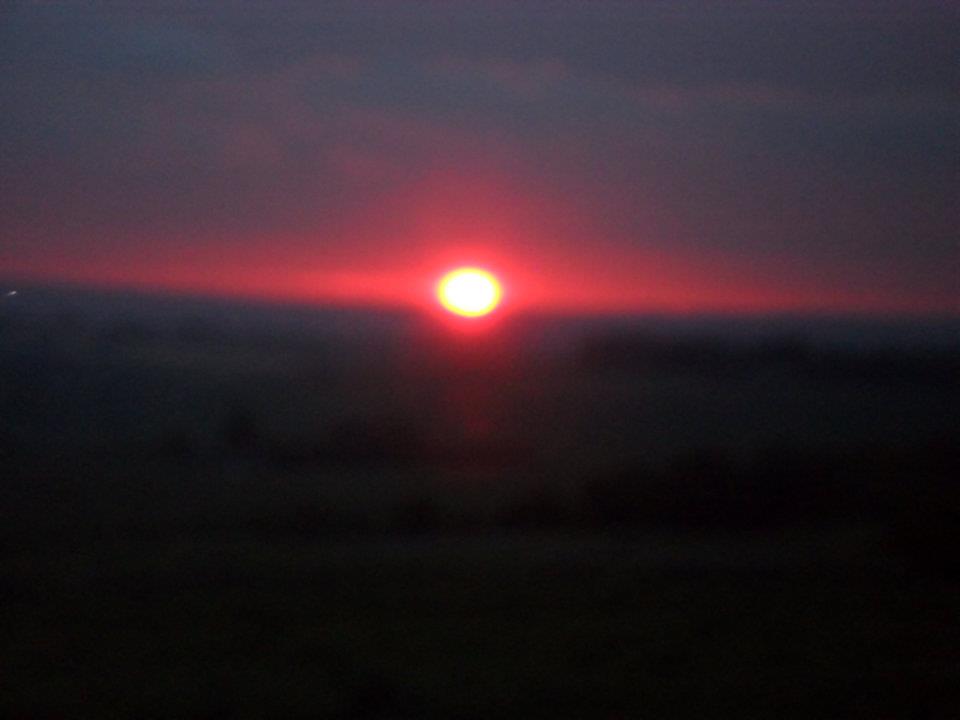Northern Henge, Thornborough, Summer Solstice 2010

Near the Northern Henge,
Thornborough, North Yorkshire
Thornborough, North Yorkshire
In the Iron Ages people would rise and work by the light of the sun. They also recognised the thirteen full moons of the year. Having exchanged their nomadic way of life for pastoral and arable farming, they were driven by the seasons of the year, the birth and maturing of animals, and the crop harvests.
THE FIRE FESTIVALS
Samhain 31st October-1st November
Imbolc 1st-2ndFebruary
Beltane 30thApril -1st May
Lughnasadh 31st July-1st August
Samhain is a time when the veil between the physical world and the afterlife or spiritual world became very thin, and the spirits of the ancestors walked abroad. This led to traditions such as the pumpkin heads that are hollowed out to house a candle which shines through the cut out face to scare of evil spirits that are roaming
around.
Imbolc may be derived from the Proto-Celtic word “Eumelc” meaning “first milking”. It is a festival held at the very end of the Winter, when the first traces of the new Spring are showing, and the first lambing of the ewes began. The festival is traditionally held on the 2nd February, and heralds new beginnings, the start of the fertile growing season of the year. It is a time when the earth begins to stir and push forth new life. Today we see snowdrops and aconites peeping through frost and snow, pointing the way to the warmer months ahead.
Beltane was held six months later than Samhain, at the opposite side of the wheel of the year. As with Samhain, it is a time when the veil between this world and the otherworld is thought to be thin. However, the light hours are increasing and the Winter is over, so there is less to be fearful about. Beltane was considered to be the start of Summer and was held at the beginning of May.
Lughnasadh was held as a celebration of the God Lugh who was, “Good at All Things.” In Europe he was revered as Lugos, and in Wales he was known as Llew. His festival was important enough to be inscribed on the Calendar of Coligny. The festival became the Christian celebration of the first harvest, and as such was re-named Lammas (“Loaf Mass”).
THE FIRE FESTIVALS
Samhain 31st October-1st November
Imbolc 1st-2ndFebruary
Beltane 30thApril -1st May
Lughnasadh 31st July-1st August
Samhain is a time when the veil between the physical world and the afterlife or spiritual world became very thin, and the spirits of the ancestors walked abroad. This led to traditions such as the pumpkin heads that are hollowed out to house a candle which shines through the cut out face to scare of evil spirits that are roaming
around.
Imbolc may be derived from the Proto-Celtic word “Eumelc” meaning “first milking”. It is a festival held at the very end of the Winter, when the first traces of the new Spring are showing, and the first lambing of the ewes began. The festival is traditionally held on the 2nd February, and heralds new beginnings, the start of the fertile growing season of the year. It is a time when the earth begins to stir and push forth new life. Today we see snowdrops and aconites peeping through frost and snow, pointing the way to the warmer months ahead.
Beltane was held six months later than Samhain, at the opposite side of the wheel of the year. As with Samhain, it is a time when the veil between this world and the otherworld is thought to be thin. However, the light hours are increasing and the Winter is over, so there is less to be fearful about. Beltane was considered to be the start of Summer and was held at the beginning of May.
Lughnasadh was held as a celebration of the God Lugh who was, “Good at All Things.” In Europe he was revered as Lugos, and in Wales he was known as Llew. His festival was important enough to be inscribed on the Calendar of Coligny. The festival became the Christian celebration of the first harvest, and as such was re-named Lammas (“Loaf Mass”).








